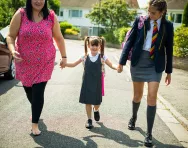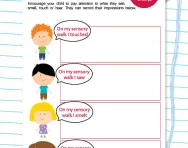Important update from TheSchoolRun
For the past 13 years, TheSchoolRun has been run by a small team of mums working from home, dedicated to providing quality educational resources to primary school parents. Unfortunately, rising supplier costs and falling revenue have made it impossible for us to continue operating, and we’ve had to make the difficult decision to close. The good news: We’ve arranged for another educational provider to take over many of our resources. These will be hosted on a new portal, where the content will be updated and expanded to support your child’s learning.
What this means for subscribers:
- Your subscription is still active, and for now, you can keep using the website as normal — just log in with your usual details to access all our articles and resources*.
- In a few months, all resources will move to the new portal. You’ll continue to have access there until your subscription ends. We’ll send you full details nearer the time.
- As a thank you for your support, we’ll also be sending you 16 primary school eBooks (worth £108.84) to download and keep.
A few changes to be aware of:
- The Learning Journey weekly email has ended, but your child’s plan will still be updated on your dashboard each Monday. Just log in to see the recommended worksheets.
- The 11+ weekly emails have now ended. We sent you all the remaining emails in the series at the end of March — please check your inbox (and spam folder) if you haven’t seen them. You can also follow the full programme here: 11+ Learning Journey.
If you have any questions, please contact us at [email protected]. Thank you for being part of our journey it’s been a privilege to support your family’s learning.
*If you need to reset your password, it will still work as usual. Please check your spam folder if the reset email doesn’t appear in your inbox.
Walking the school run

Statistics from the Department for Transport reveal that road traffic in Britain grew by 80 per cent between 1980 and 2005, and the number of children travelling to school in cars has doubled over the past 20 years. In 2017, more than a third (34%) of children in England aged 5-16 travelled to school by car every day, according to research from the AA.
There’s concern that this trend is contributing to reduced physical activity in children and an increase in childhood obesity levels, urban congestion, and air pollution.


Boost Your Child's Learning Today!
- Start your child on a tailored learning programme
- Get weekly English & maths resources sent direct to your inbox
- Keep your child's learning on track
What are the benefits of walking to school?
The school run accounts for a large proportion of rush-hour traffic. Here are some of the key benefits of taking to your feet instead:
Health
Soaring rates of childhood obesity and illnesses such as Type 2 Diabetes associated with this can be prevented through a healthy dose of walking. In fact, walking helps protect the body from many serious illnesses later on in life. On average around half of all children do not do the minimum one hour a day of physical activity recommended by the Health Education Authority. A brisk walk to school can help them get their daily exercise and arrive at school or home, refreshed and energised.
Social
Walking can have a positive effect on a child’s emotional wellbeing. It can encourage independence, road sense and also be an opportunity to chat with friends.
Environmental
The average drive to school and back releases 800g of CO2 into the air – enough to inflate over 60 balloons.
Economical
Encouraging your child to walk to school will save you money on transport fares or petrol money.
Walking to school dos and don'ts
It is up to you as a parent to decide when your child is old enough to walk to school alone or with friends. Always make sure your child is familiar with the route and keeps in contact with you should they be late home.
Model good road safety yourself at all times – children learn by example so it’s vital to show them they must cross at crossings.
Check your child’s footwear is comfortable and appropriate for walking. You could bring trainers for the walk and they could change their shoes once at school.
Make sure your child’s school bag isn’t too heavy as this can cause back problems and poor posture.
If you live far from the school you could try combining alternative transport with walking, or drive part of the way.
Make walking fun and enjoyable for your child. Chat about the local surroundings, and encourage your child to talk about their school day.
- Find out if there are any schemes in your local area such as 'walking buses', groups of school children chaperoned by two adults (a 'driver' and a 'conductor') and operating just like a regular school bus – collecting children and taking them to school – but all on foot!
It's also worth investigating how you might make changes to your school drop-off and pick-up routines, one or more times a week. Could you 'Park and Stride', for example?
The AA has some tips to help make your school journey quicker and easier and ease congestion for other road users, and the Walk to School campaign offers tips and ideas to help teachers and parents get children excited about walking.








